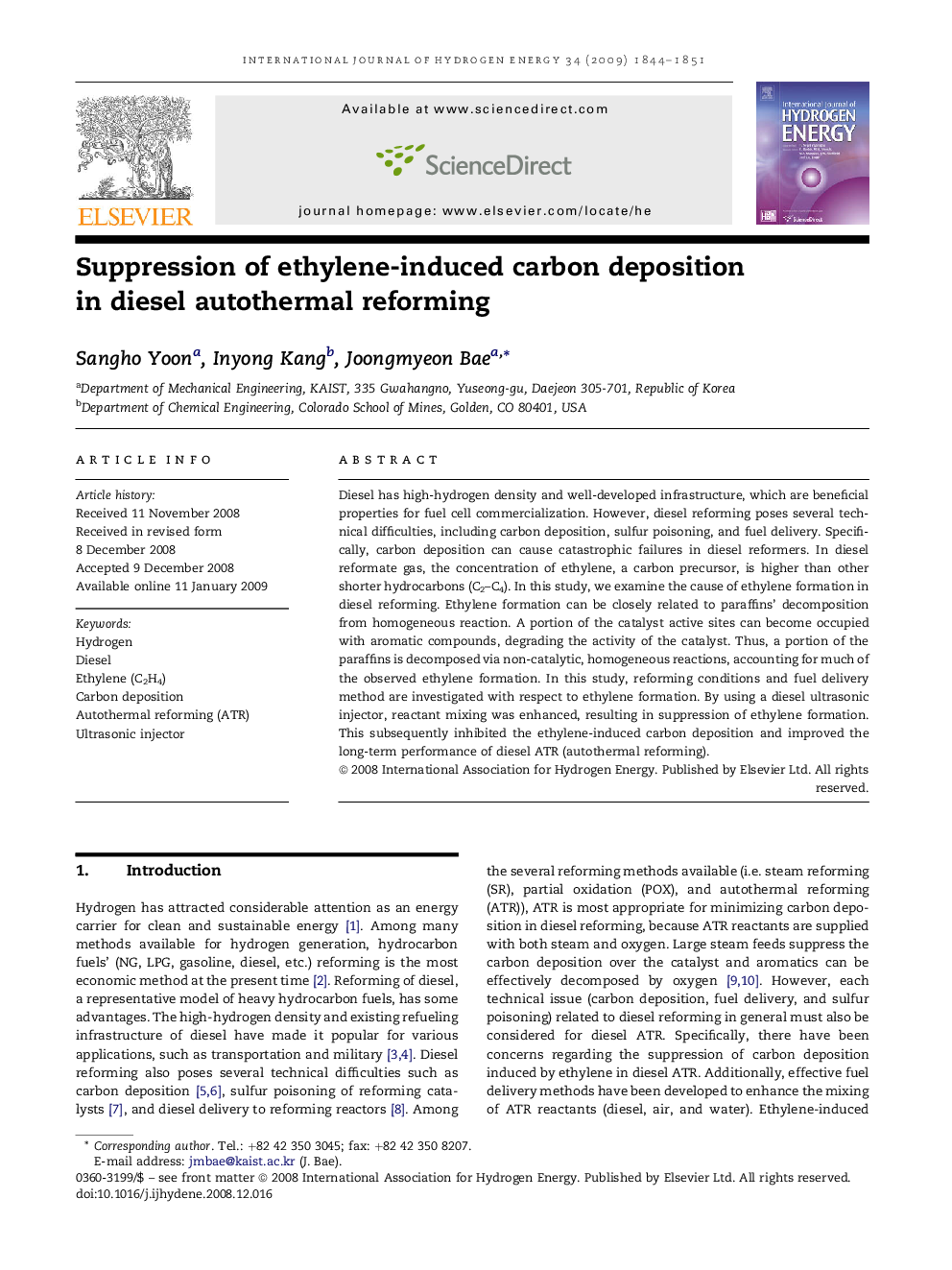| Article ID | Journal | Published Year | Pages | File Type |
|---|---|---|---|---|
| 1274305 | International Journal of Hydrogen Energy | 2009 | 8 Pages |
Diesel has high-hydrogen density and well-developed infrastructure, which are beneficial properties for fuel cell commercialization. However, diesel reforming poses several technical difficulties, including carbon deposition, sulfur poisoning, and fuel delivery. Specifically, carbon deposition can cause catastrophic failures in diesel reformers. In diesel reformate gas, the concentration of ethylene, a carbon precursor, is higher than other shorter hydrocarbons (C2–C4). In this study, we examine the cause of ethylene formation in diesel reforming. Ethylene formation can be closely related to paraffins' decomposition from homogeneous reaction. A portion of the catalyst active sites can become occupied with aromatic compounds, degrading the activity of the catalyst. Thus, a portion of the paraffins is decomposed via non-catalytic, homogeneous reactions, accounting for much of the observed ethylene formation. In this study, reforming conditions and fuel delivery method are investigated with respect to ethylene formation. By using a diesel ultrasonic injector, reactant mixing was enhanced, resulting in suppression of ethylene formation. This subsequently inhibited the ethylene-induced carbon deposition and improved the long-term performance of diesel ATR (autothermal reforming).
